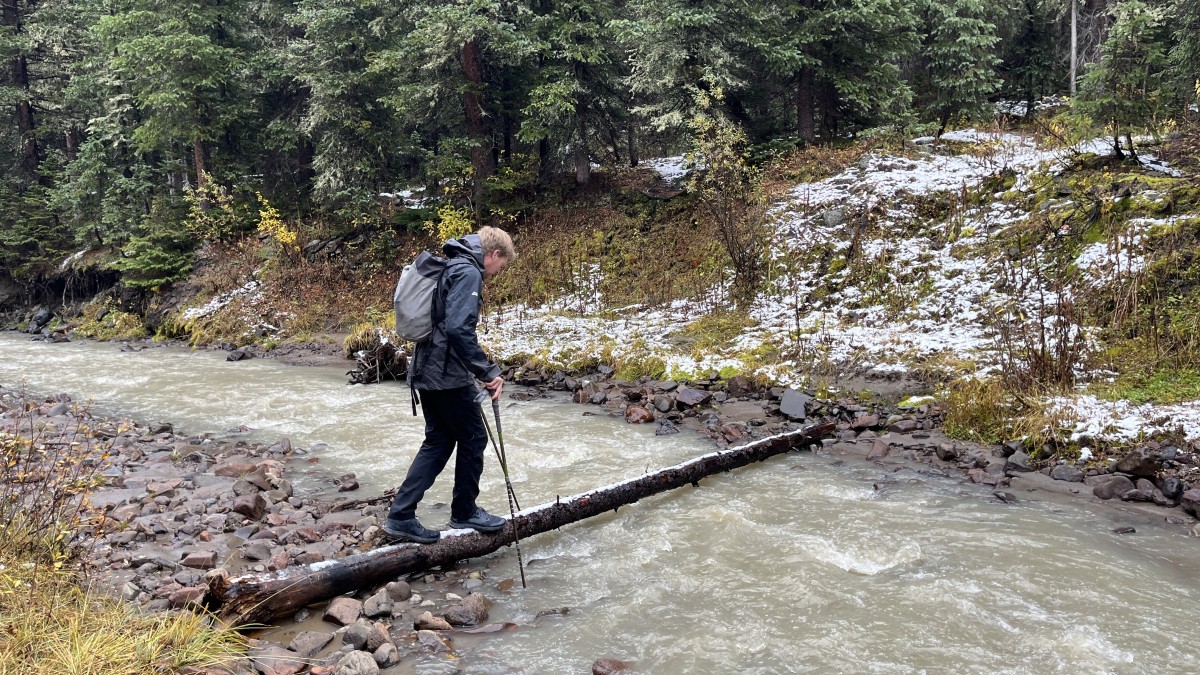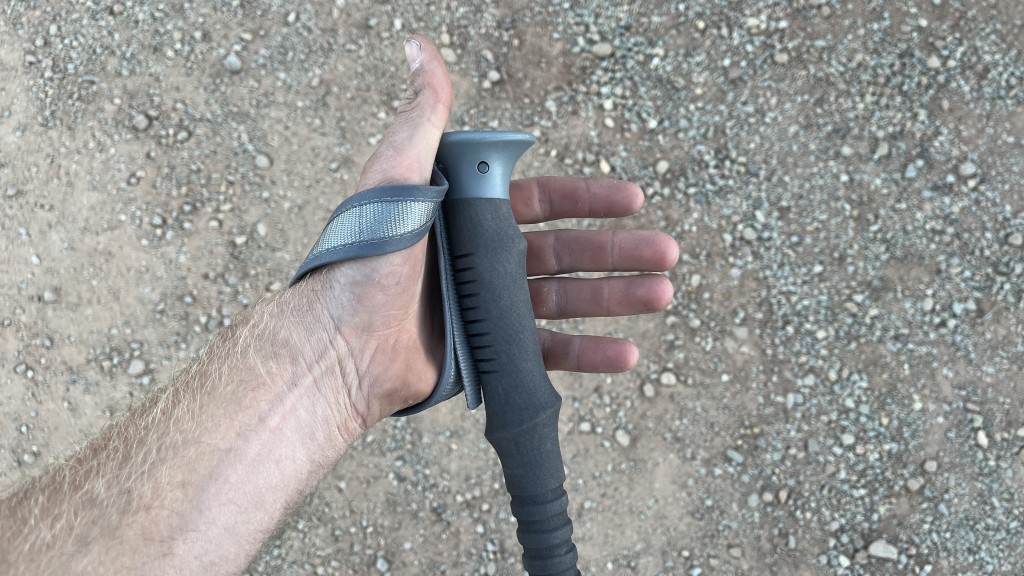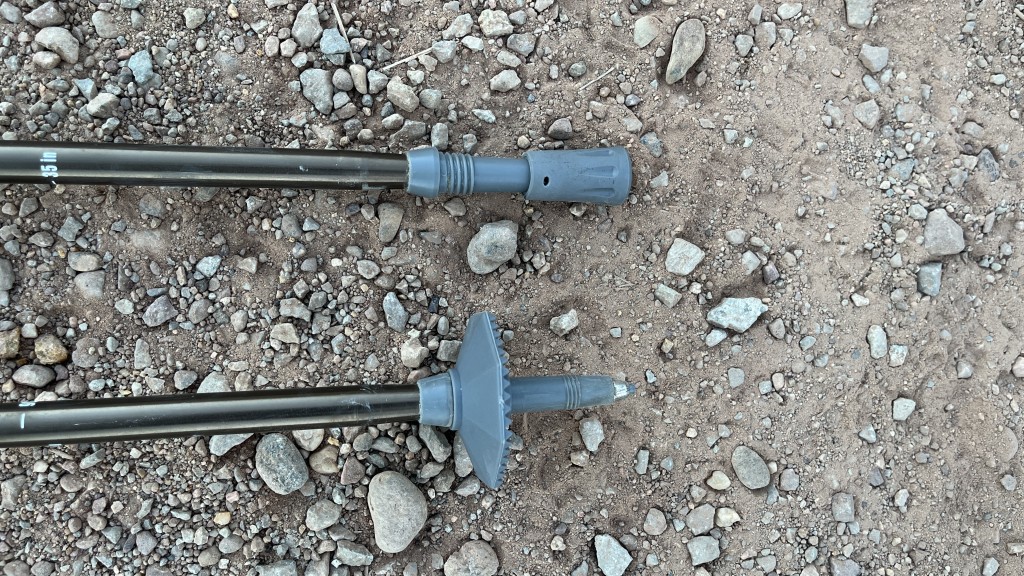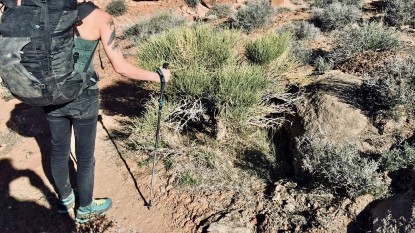Our Verdict
Our Analysis and Test Results
The Upslope 2.0 is tempting to consider at the bargain basement price. However, we were underwhelmed and generally feel you should fork over a bit more money for something more comfortable and versatile.
Performance Comparison
Comfort
If a pole is uncomfortable to hold, it won't make your hike any more fun. Unfortunately, the Kelty Upslope 2.0 has round grips with minimal ergonomic contouring, so they didn't fit our hands very well. Furthermore, the grip diameter is large, which worked for testers with big hands, but for everyone else, they were awkward to hold. The secondary grip features ribbed foam that also misses the mark for comfort. In general, these poles are hard to hold. On the upside, the slightly padded wrist straps are comfortable.
Weight
At 18 ounces per pair, the Upslope 2.0 is on the heavier side for trekking poles. This is likely due to the large-diameter aluminum shafts, which are wider than most other trekking poles out there. This makes them slightly less pleasant to take on hikes, and they have lots of weight in the lower shaft sections, adding swing weight. Generally, we prefer lighter poles overall, and especially poles with lower swing weight, because they make hiking more comfortable. It's easy to feel the weight of these poles when using them.
Versatility
These poles weigh a lot and don't pack down small, making them less suitable for technical missions like alpine climbing and mountain running. They are sturdy, but their locking mechanisms are prone to failure and can't be tightened in the field, meaning these poles aren't a good choice for international travel and rugged, remote trekking where a pole failure can ruin a trip. The Upslope 2.0 performs just fine for normal day hikes and short jaunts, but that's about it.
Locking and Adjustability
The Upslope 2.0 boasts an incredible 18 inches (45 centimeters) of length adjustment. This is great for a rental pole or a pole you can give to visiting guests, but in our experience, we rarely need our trekking poles to have this much length adjustability. In fact, we are usually just fine with fixed-length trekking poles once we know how long we like them. Also, the Upslope uses outdated twist-lock mechanisms to preserve the pole's length, which requires twisting two shaft sections apart from each other to loosen the connection, then adjusting the length, and then twisting the two sections back the opposite direction to tighten. Sometimes it can be hard to grasp the sections, and sometimes the locking mechanism can't preserve the length while weighted, no matter how hard you twist the sections to tighten them.
Packed Size
The Upslope 2.0 is a three-section telescoping pole, meaning the three shaft sections extend and retract in one direction, fitting cleanly inside one another to collapse to a smaller size for packing and storage. These poles pack down to a minimum length of 25.5 inches, which is too long to be useful for packing inside a backpack or strapping onto the outside of one, as they will stick out of the top. It can also be a pain to pack them inside small and medium-sized duffel bags, making them less practical for travel. If you need to pack your trekking poles into your backpack for sections of scrambling or climbing or just want a pole that packs down small, look elsewhere.
Construction Quality
Aluminum pole sections are generally stronger than carbon ones, and these poles have thick aluminum shafts that last a long time. The foam grips are susceptible to chipping, but only if treated with carelessness, and the carbide tips resist wear. Overall, these are a good choice for durability, but the twist-lock adjustment mechanisms are prone to failure over time.
Should You Buy the Kelty Upslope 2.0?
Overall, we are not impressed by the quality of these poles. They are very affordable, but there are better poles on the market for a similar price. The only reason to buy the Upslope is if you need a pole that can deliver 18 inches of length adjustment. For example, if you are building a rental fleet for a business or accumulating poles for guests to use, these might make sense as long as your guests are only going on simple hikes.
What Other Trekking Poles Should You Consider?
If you are looking at these poles because you are shopping on a budget, we'd recommend the Trekology Trek-Z instead. They offer better performance for a similar price. If durability is your main concern, check out our top pick for heavy-duty trekking, the Leki Makalu Lite. And if you simply want the best pole that money can buy, we recommend the MSR Dynalock Ascent Carbon for all-around use.











